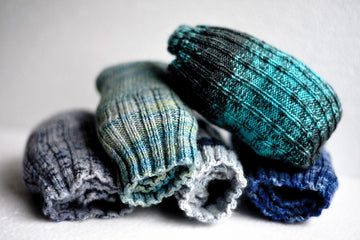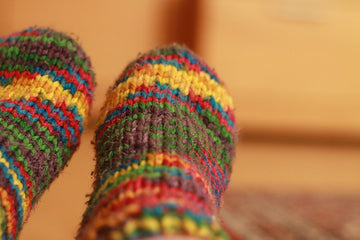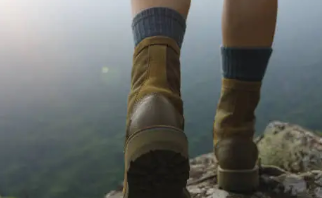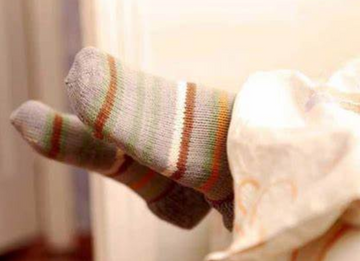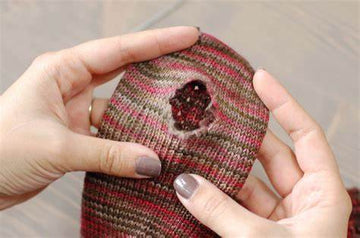
Holes in socks are a common and frustrating issue that many people face. Understanding the reasons behind this problem can help in taking effective measures to prevent it. This article delves into the various causes of holes in socks, such as long or sharp toenails, walking without shoes, unbalanced steps, and improper washing. It also provides practical tips on how to prevent holes from developing. By addressing these factors, you can extend the life of your socks, maintain foot hygiene, and make more sustainable choices.
Why Do My Socks Keep Getting Holes
Holes in socks can be a frustrating and common problem, and there are several reasons why they might occur.
Toenails that are not regularly trimmed or filed can create friction against the fabric of the socks, leading to holes, especially at the toes.
Walking around in socks without the protection of shoes can cause significant wear and tear. Hard surfaces like floors can abrade the fabric, particularly at the heels and balls of the feet.
An uneven gait or unbalanced walking pattern can put extra stress on certain areas of the socks. For instance, if you tend to put more weight on one part of your foot, that area of the sock will wear out more quickly.
Washing socks with harsh detergents, in hot water, or with rougher clothing items can weaken the fabric fibers. Additionally, tumble drying on high heat can cause shrinkage and stress on the material, leading to holes.
Taking steps to address these causes can help extend the life of your socks. For example, keeping toenails trimmed, wearing slippers or shoes indoors, paying attention to how you walk, and washing socks gently can all contribute to fewer holes.
How to Prevent Your Socks from Developing Holes
By following these tips, you can significantly reduce the likelihood of your socks developing holes and rips, extending their lifespan and ensuring better comfort and performance.
Wearing socks without shoes, especially on hard surfaces, can quickly degrade the fabric. Socks are not designed to withstand the abrasion and pressure of walking on surfaces like wood, tile, or concrete without the protection of shoes.
Wear socks designed for the specific activity you’re engaging in. For example, athletic socks for sports, thicker socks for hiking, and dress socks for formal occasions. Using the right type of sock for each activity helps them last longer.
Regularly trim your toenails to prevent them from catching on the fabric of the socks. Sharp or long toenails can easily create holes, especially in the toe area.
Keep the soles of your feet smooth by using a pumice stone or foot file. Rough skin can create extra friction and wear down the fabric of your socks. Moisturizing your feet can also help keep the skin soft and less abrasive.
Opt for socks with additional cushioning in high-wear areas such as the heels and balls of the feet. These socks may cost more, but they absorb more impact and last longer than thinner, single-layer socks.
Ensure your socks fit properly. Socks that are too tight can stretch and thin out the fabric, while socks that are too loose can bunch up and create friction. Look for socks that match your foot size accurately, especially if you have larger feet.
How long should socks last?
The lifespan of socks can vary based on several factors, including frequency of use, care routines, and the quality of the materials used. The lifespan of socks ranges from three to six months. By considering these factors and taking proper care of your socks, you can potentially extend their lifespan, even if the general expectation is that they might last three to six months under average conditions.
Frequency of Wear:
Socks that are worn more frequently will wear out faster than those worn occasionally. Daily use accelerates the wear and tear, especially if the socks are not rotated with other pairs.
Care Practices:
Proper care can significantly extend the life of socks. Using gentle detergents, washing in cold water, and air-drying or tumble-drying on low heat can prevent fabric deterioration. Following the manufacturer’s care recommendations is crucial for longevity.
Material Quality:
High-quality materials tend to last longer. Socks made from durable fabrics such as merino wool, high-grade cotton, or synthetic blends designed for durability will generally outlast those made from cheaper materials.
Additional Factors:
Individual walking patterns, toenail maintenance, and whether socks are worn without shoes can also impact their durability.
Should you throw away socks with holes?
Yes, you should throw away socks with holes.
Holes in socks compromise the protection they provide to your feet. This can lead to increased exposure to moisture, dirt, and debris, which can cause discomfort and potentially lead to infections or other foot issues.
Socks with holes do not offer complete coverage, making them less effective in cushioning and protecting your feet from friction and pressure. This can result in blisters and other foot problems.
Holes in socks allow external elements to come into direct contact with your skin. This can lead to hygiene issues, as dirt and debris can get trapped in the socks and irritate your feet.
Wearing socks with holes can look unkempt and unprofessional, especially in situations where you need to remove your shoes, such as at the gym or someone's home.
Socks with holes can be uncomfortable to wear, as the fabric around the holes can bunch up or shift, causing discomfort during walking or other activities.
Can you fix holes in socks?
Yes, you can fix holes in socks through a process called darning.
Materials Needed
- Darning needle
- Thread or yarn (matching or contrasting color)
- Darning egg or a similar object (a smooth, firm object to hold the sock's shape, such as a lightbulb or a small ball)
Steps
- Prepare the Sock
Turn the sock inside out. Place the darning egg or similar object inside the sock, positioning it under the hole to provide a firm surface to work on.
- Thread the Needle
Cut a length of thread or yarn, around 18-24 inches. Thread the darning needle and tie a knot at the end.
- Anchor the Thread
Start by inserting the needle a little bit away from the hole to anchor the thread in the existing fabric. Pull the thread through until the knot stops it.
- Create a Warp
Make a series of parallel stitches across the hole, running vertically or horizontally. Ensure that you go a little beyond the hole's edges into the intact fabric to secure the new thread. These parallel threads are called the "warp."
- Weave the Weft
Once the warp is in place, start weaving the weft threads in and out of the warp threads. For each row, alternate the over-and-under pattern to create a woven patch. Keep your stitches tight enough to close the hole but not so tight that they distort the fabric.
- Finish Off
When you’ve covered the hole, anchor the thread in the existing fabric again. Pull the thread through to the inside of the sock and tie a secure knot. Trim any excess thread.
- Inspect Your Work
Turn the sock right side out and check the repair. The darning should hold the fabric together without creating any uncomfortable lumps.
Tips
Practice Makes Perfect: If you're new to darning, practice on an old sock first to get the technique right.
Prevent Future Holes: Consider reinforcing areas that are prone to wear (like the toes and heels) before they develop holes.
Use a Darning Mushroom: If you don’t have a darning egg, you can purchase a darning mushroom, which is specifically designed for this purpose.
Should you wash socks inside or out?
Yes, washing socks inside out is recommended.
The interior of socks comes into direct contact with your feet, collecting sweat, oils, and dirt. Turning socks inside out exposes the dirtier surface to the detergent and water, resulting in a more thorough clean.
Sweat and bacteria trapped inside the fabric can cause odors. Washing socks inside out allows the detergent to directly address these odors, helping to eliminate them more effectively.
The friction of washing can cause pilling and wear on the exterior of the socks. Washing them inside out helps protect the outer surface, keeping your socks looking newer for longer.
If you pretreat socks for stains, doing so on the inside can help ensure that the areas most affected by foot contact are properly treated.
Final Thoughts
Holes in socks are not just a nuisance but can also lead to discomfort and potential foot issues. They can result from a variety of factors including long toenails, walking in socks without shoes, an uneven gait, and improper washing techniques. By taking preventive measures such as trimming toenails, wearing shoes indoors, using the right type of socks for different activities, and following proper care instructions, you can significantly reduce the occurrence of holes.
Read More:
Why Do We Wear Socks
Do You Wear Socks with Climbing Shoes
What Color Socks with Brown Shoes
What Socks to Wear with Loafers
What are Grip Socks
What Socks to Wear with Cowboy Boots
Are Wool Socks Good for Summer




